Water
Water – how much is enough? Basically it comes down to what do you want your loaf to be – Turkish Pide, a crusty garlic loaf, soft iced donuts, sandwich bread? They will all differ in the relative amounts of liquid (hydration) that are needed. Although it will not be the same, a good place to start would be to use a similar hydration percent as one that is used for the style of wheat bread that you want to make. Be prepared to add more liquid as it is always easier to add more liquid than try to take it out. As the hydration percentage of different types of wheat bread varies enormously I have included a list of some common breads. Ingredients such as eggs and butter will also contribute to the overall hydration of the dough so they have been included in the table. Differences in the hydration percent for wheat based recipes will also differ if “stronger” flour is used, if preferment dough is used, the way the ingredients are mixed (bread machine or by hand), who/what is mixing the dough etc. Therefore the hydration rates in the following table are a guideline only.
The hydration percentage is the amount of liquid (usually water) that is added relative to the weight of the flour in the recipe. For example if I was to make Ciabatta with 100 g of flour I would added approximately 73 - 82 g of water.
| Type of Bread | Hydration % | Eggs | Butter/Oil | Sugar |
| Baguettes | 66 - 70 | |||
| Brioche | 20+ | whole | Butter | Yes |
| Baps | 74 | |||
| Challah | 53+ | whole | Oil | Yes |
| Ciabatta | 73 - 82 | |||
| Garlic/Herb | 49 - 52+ | egg whites | Butter | |
| Italian Easter | 50+ | whole | Butter | |
| Pizza Dough | 66 | Depends on recipe | ||
| Roti | 58 | |||
| Rustic Garlic Loaf | 69 - 74+ | Butter | ||
| San Francisco Sourdough | 57 | |||
| Sicilian White | 60 | |||
| Turkish Pide | 72 - 78 | Depends on recipe | Depends on recipe | |
| White | 63 - 68 |
The crumb is the technical term for the interior part of the bread. The appearance of the crumb will depend on the type of bread you make and its hydration percent. The following photo shows how crumb differs with varying hydration (Cooks Illustrated). Remember these photos are of wheat based breads.

The hydration percent of a “standard” wheat white loaf made by the home baker is approximately 63 – 68. Wetter wheat dough (73 - 82%) will produce breads like Ciabatta or Turkish Pide. These breads tend to have a coarse crumb with some large holes present. How do these hydration percentages compare with bread made with Bakers' Magic Gluten free flour? Following are photos of baguettes made using Bakers' Magic Gluten free flour with different hydration percentages. I know that the hydration percentages required to make bread with Bakers' Magic Gluten free flour are significantly higher than with wheat so I have started at 80% hydration. Dough was made with hydration percentages of 80, 90, 100, 110, 120, 130, 140, 150 and 160. The corresponding baguettes are shown in the photos below. The photo on the left (starting at the back) shows the baguettes with the hydration percentages of 80, 90, 100, 110 and 120. The photo on the right (starting at the back) shows the baguettes with the hydration percentages of 120, 130, 140, 150 and 160.
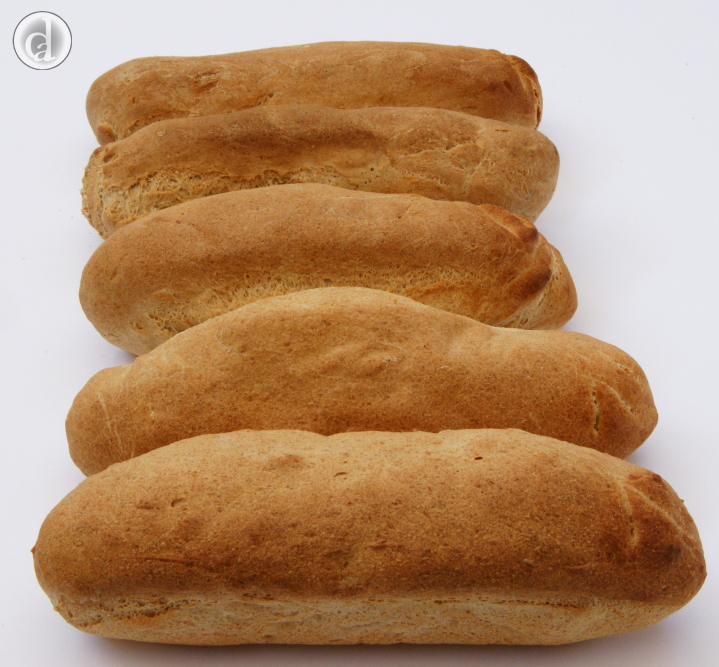
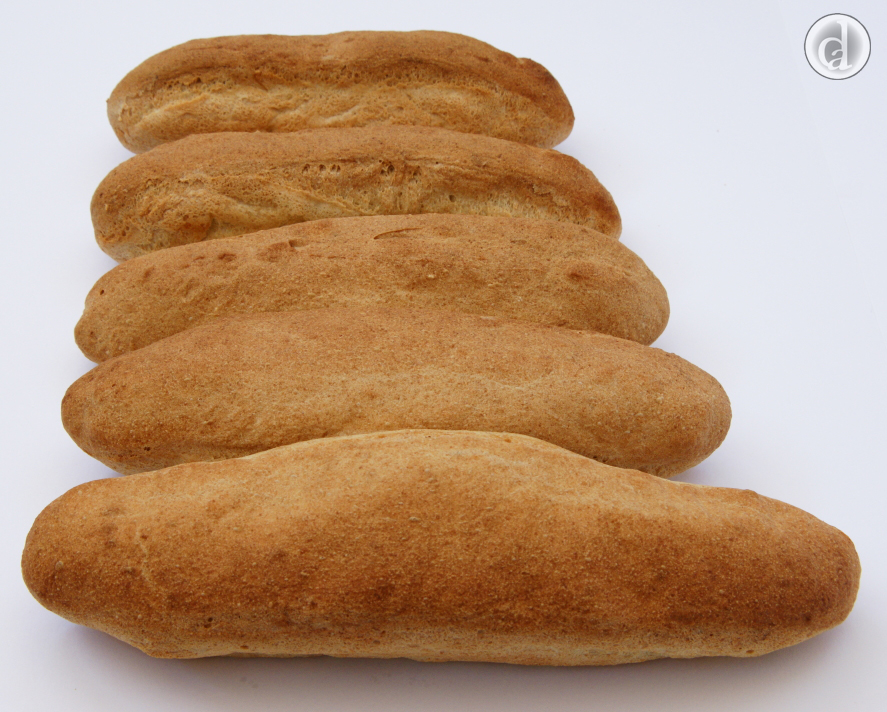
The difference the hydration percentage makes to the size of the baguette is easily seen when the 80% hydration baguette is compared with the 160% hydration baguette. However, bigger is not necessarily better – it’s what’s inside that counts!
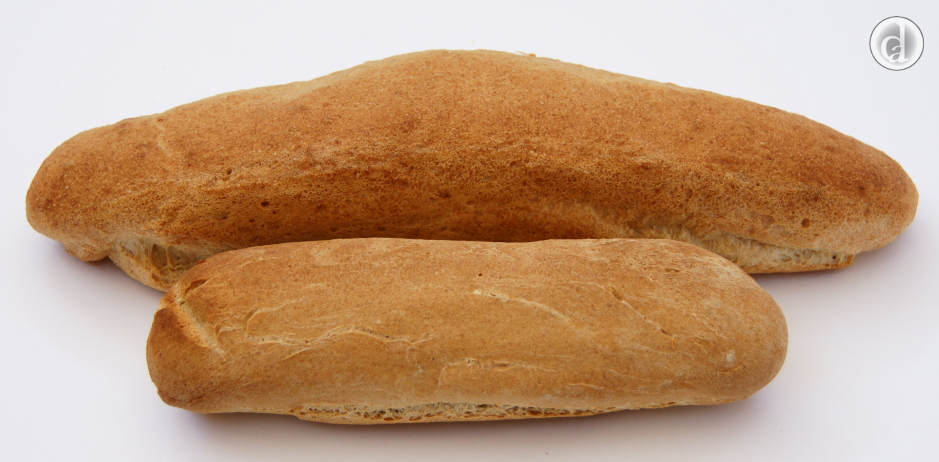
Comparison of the Crumb
The following photos are of the inside of the baguettes pictured above. Below each photo are the corresponding hydration percentage and the amount of water required if using 450 g of Bakers' Magic Gluten free flour.
They are grouped into:
A) Tight – 80 to 100 percent hydration. These are dense breads with a tight crumb; there is not a great deal of flexibility in the bread.
B) Flexible – 110 to 130 percent hydration. This range increases in flexibility and is soft (more like sandwich bread).
C) Holey – 140 to 160 percent hydration. The amount of steam/carbon dioxide that is generated in this range is too great to be “uniformly” dispersed throughout the bread; enormous holes are the result.
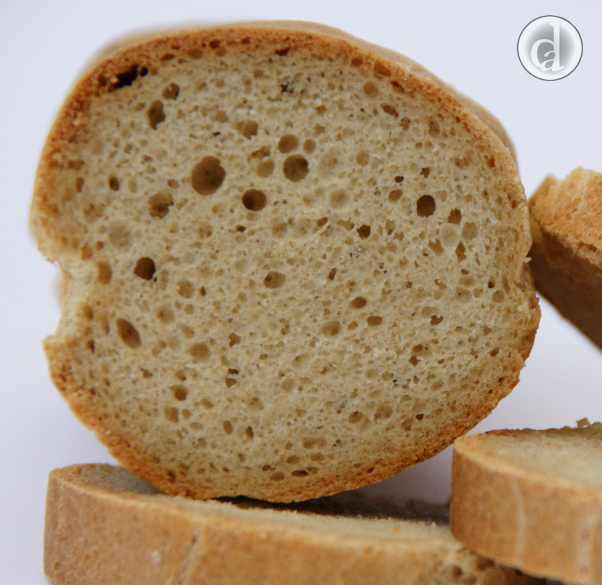
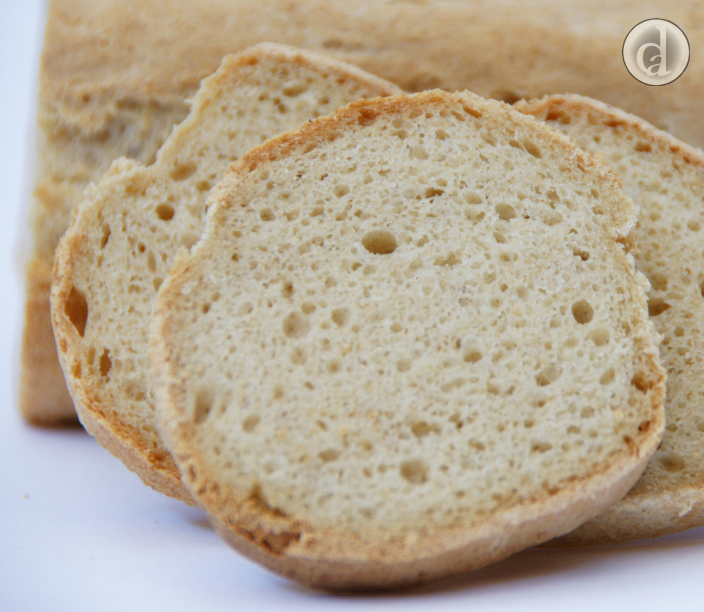
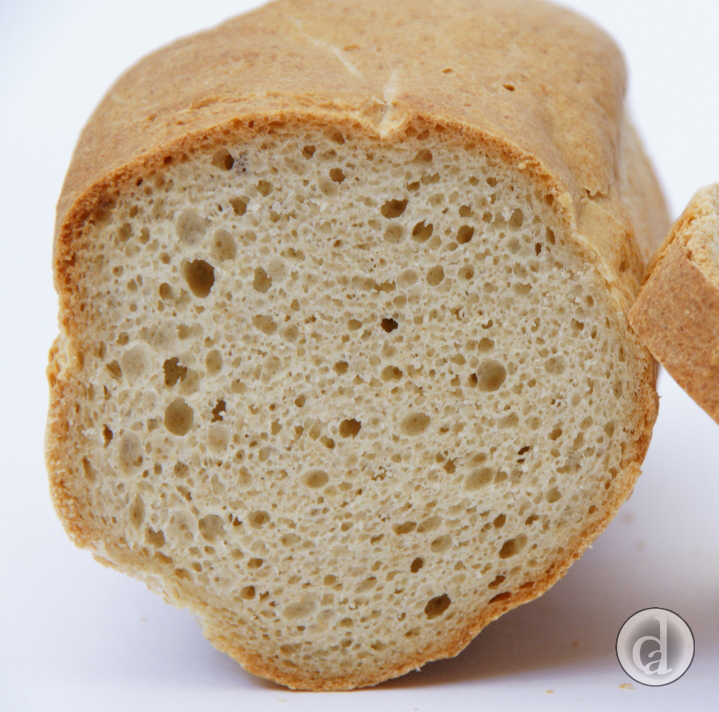
80% = 360 ml 90% = 405 ml 100% = 450 ml
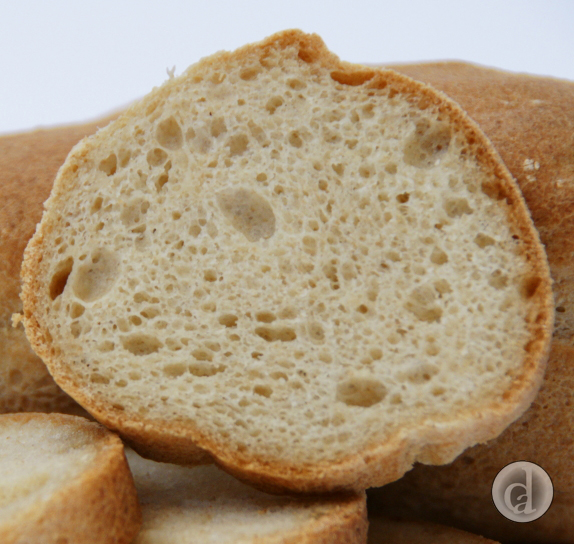
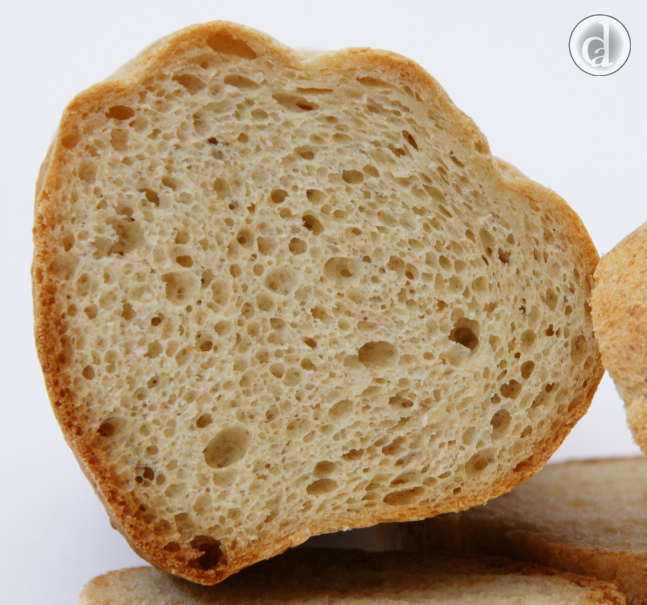
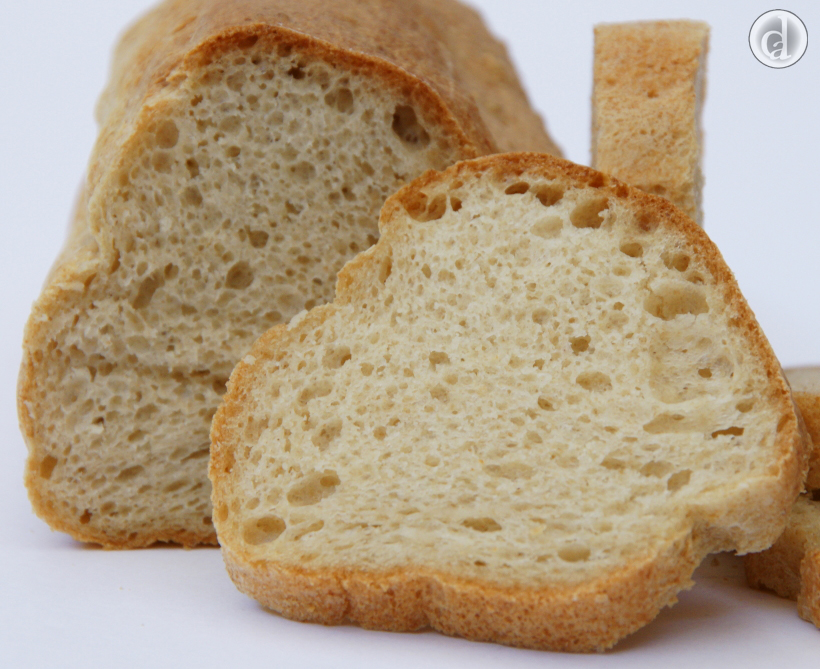
110% = 495 ml 120% = 540 ml 130% = 585 ml
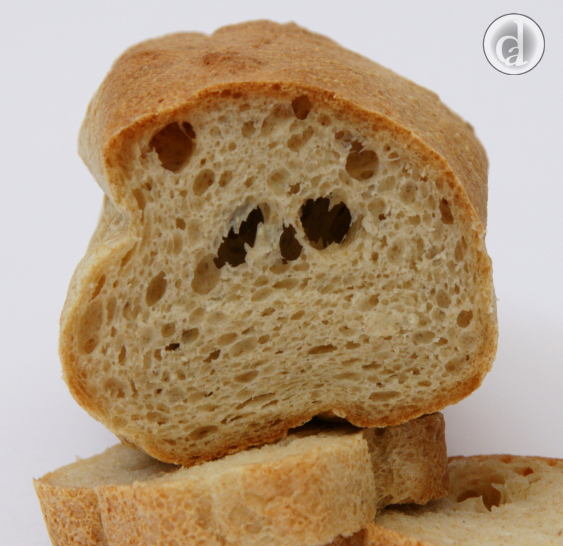
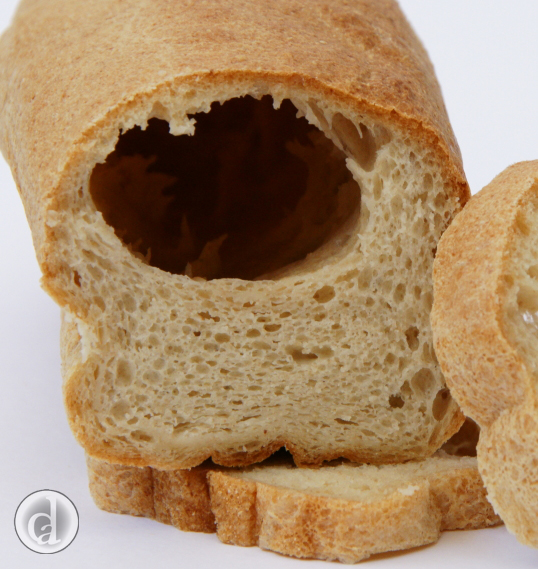
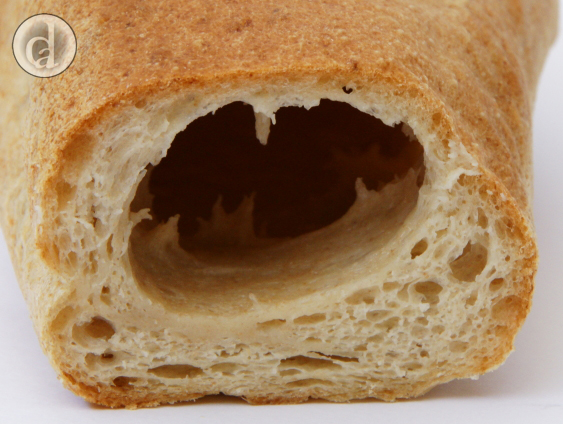
140% = 630 ml 150% = 675 ml 160% = 720 ml
I can’t image ever making bread using 160% hydration or perhaps bread with 80% hydration however I frequently make breads from all three groups. As with wheat bread the hydration percent used will depend on the style of bread that is needed; although it is considerably higher.
Basically the following can be used as a guide;
Soft, flexible “sandwich” bread 120 – 130% hydration
Breads to shape 100 – 110% hydration (eg Goji and Pistachio)
Thinner breads with “holey” crumb 140 – 150% hydration
(eg Turkish Pide)
